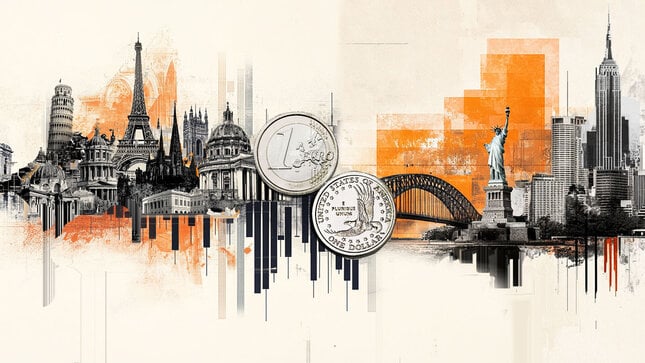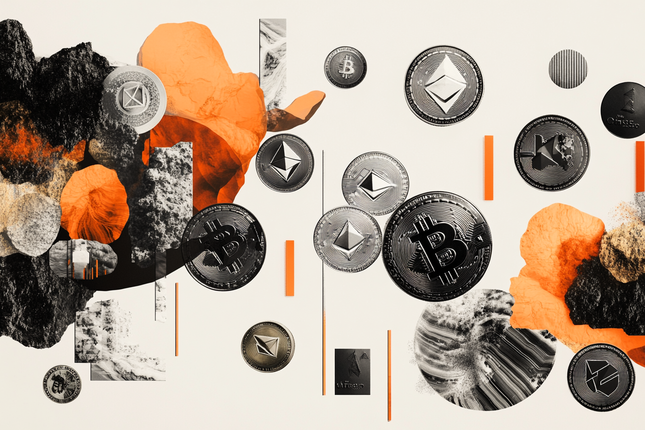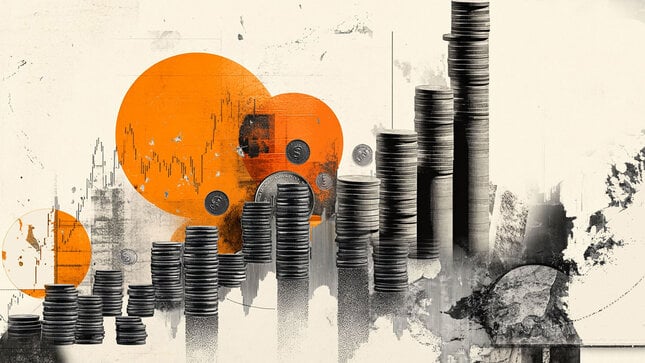USD/INR Exchange rate
Editors’ Picks

Gold to challenge fresh record highs
Gold prices soared to $4,497 early on Monday, as persistent US Dollar weakness and thinned holiday trading exacerbated the bullish run. The bright metal eases following the release of an upbeat US Q3 GDP reading, as USD finds near-term demand in the American session.

EUR/USD eases from around 1.1800 after US GDP figures
The US Dollar is finding some near-term demand after the release of the US Q3 GDP. According to the report, the economy expanded at an annualized rate of 4.3% in the three months to September, well above the 3.3% forecast by market analysts.

GBP/USD retreats below 1.3500 on modest USD recovery
GBP/USD retreats from session highs and trades slightly below 1.3500 in the second half of the day on Tuesday. The US Dollar stages a rebound following the better-than-expected Q3 growth data, limiting the pair's upside ahead of the Christmas break.

Crypto Today: Bitcoin, Ethereum, XRP decline as risk-off sentiment escalates
Bitcoin remains under pressure, trading above the $87,000 support at the time of writing on Tuesday. Selling pressure has continued to weigh on the broader cryptocurrency market since Monday, triggering declines across altcoins, including Ethereum and Ripple.

Ten questions that matter going into 2026
2026 may be less about a neat “base case” and more about a regime shift—the market can reprice what matters most (growth, inflation, fiscal, geopolitics, concentration). The biggest trap is false comfort: the same trades can look defensive… right up until they become crowded.
Majors
Cryptocurrencies
Signatures
USD/INR
The USD/INR pair tells the trader how many Indian Rupees (the quote currency) are needed to purchase one U.S. dollar (the base currency). The Rupee is symbolized by ₹ and is the 20th most traded currency worldwide.
HISTORIC HIGHS AND LOWS FOR USD/INR
- All-time records: Max: 69.528 on 28/08/2013 - Min: 1.30 in 1948
- Last 5 years: 74.42 on 11/10/2018 - Min: 61.81 on 28/03/2015
* Data as of February 2020
ASSETS THAT INFLUENCE USD/INR THE MOST
- Currencies: USD, CNY and GBP.
- Commodities: Gold, oil and silver (India is a major oil and commodity importer).
- Bonds: T-NOTE 10Y (10 year United States Treasury note) and GIND10YR (India Government Bond Generic Bid Yield 10 Year).
- Indices: S&P BSE SENSEX (S&P Bombay Stock Exchange Sensitive Index), NIFTY (National Stock Exchange of India's benchmark stock market index for Indian equity market) and NSE (National Stock Exchange of India Ltd).
ORGANIZATIONS, PEOPLE AND ECONOMIC DATA THAT INFLUENCE USD/INR
In India, the organizations and people that affect the most the moves of the USD/INR pair are:
- Reserve Bank of India which controls the issue and supply of the Indian rupee. RBI is the regulator of entire Banking in India. It plays an important part in the Development Strategy of the Government of India, issues statements and decides on the interest rates of the country. Its Governor is Shaktikanta Das.
- Government of India, often abbreviated as GoI, (whose President is Ram Nath Kovind) and its Ministry of Finance (whose minister is Nirmala Sitharaman) that implement policies that affect the economy of the country.
In the USA, we have:
- Fed, the Federal Reserve of the United States of America whose president is Jerome Powell. The Fed controls the monetary policy, through active duties such as managing interest rates, setting the reserve requirement, and acting as a lender of last resort to the banking sector during times of bank insolvency or financial crisis.
- The US Government (and its President Donald Trump): events as administration statements, new laws and regulations or fiscal policy can increase or decrease the value of the US Dollar and the currencies traded against it, in this case the Bank of India.
In terms of economic data, we should highlight the Trade Account Balance, a balance between exports and imports of total goods and services. A positive value shows a trade surplus, while a negative value shows a trade deficit. It is an event that generates some volatility for the USD/INR. If a steady demand in exchange for INR exports is seen, that would turn into a positive growth in the trade balance, and that should be positive for the INR.
Inflation is another economic value that is important for the USD/INR pair. It is measured among others by the CPI (Core Price Index) and the PPI (Production Price Index). They are key indicators to measure inflation and changes in purchasing trends.